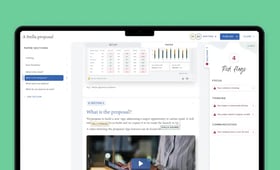We often hear from board members that regulatory scrutiny of UK boards has increased markedly over the past years, creating perverse outcomes alongside well-intended ones. But is that opinion or fact?
We collaborated with Cambridge Judge Business School to assess the actual impact of these changes. The standout finding: there’s been a dramatic increase in the length of board packs and the reading time of non-executive directors.
What’s going on with board packs?
Ballooning papers, static meeting time...
Our research finds a notable change in the length of the board pack, with 53% of respondents saying their pack had increased. And more than half now have a board pack of 200+ pages — with some pushing 1,000 pages at the extreme end.
While board packs are getting longer, our data show that the frequency and duration of board meetings have remained largely the same — meaning the increasing workload of board members is falling outside of board meetings. Board members have more information to read and digest before their board meetings, and executives are spending more time producing information for the board.
Directors read more, yet miss more
Our findings also indicate that the average time a board member spends reading a board pack is just shy of four hours. This is a sizeable 30% increase compared to the same piece of research we carried out in 2011.
We know from our advisory work that a reader familiar with the content of the board pack and reading it for comprehension can read a maximum of 30 pages in an hour (120 pages in four hours). So, despite board members committing 30% more time to reading board papers, almost half of the average board pack is going unread — creating huge waste, risks, and liability.
What’s causing board packs to increase in length?
Our research identifies that the main driver is more reporting on compliance, regulation, and risk. Of the board packs that had increased in length, 92% contained more compliance and regulation reporting, and 88% more reporting on risk. And even in board packs that have not gotten longer, roughly two-thirds saw an increased focus on these issues.
This is not surprising. In the aftermath of the financial crisis and subsequent scandals, boards became much more interested in risk — in particular, strategic risks and external threats. In parallel, we’ve seen the introduction of legislation that makes directors more directly and explicitly responsible for certain activities than they were before. This is especially true in the financial services sector with the introduction of the Senior Managers and Certification Regime, and, even before this, the 2010 Bribery Act.
Use our assessment tool to find out how effective your board reporting is and get actionable tips on how to improve the quality of your board pack.
Start nowSo what?
There are two obvious dangers associated with this information inflation:
- First, board members may simply be unable to read all their board pack, creating clear risks they miss vital information. Reading the reports can become an exercise in looking for the proverbial needle in the haystack, hoping to stumble upon the information that matters.
- Second, even for the boards who manage to read it all, time spent on overly long papers is time not spent on adding value. Add the fact that compliance and risk papers tend to be long and detailed, and papers discussing strategy can end up overlooked, or, worse, crowded out from the pack altogether.
Our evidence also suggests that as well as the risks of information overload, there are positive benefits of more concise board papers. Three-quarters of those directors whose board packs had not increased in length over the past five years reported an increased focus on strategic matters — a higher percentage than those whose board packs had grown longer. This shows that, if enough attention is paid to preparing the papers, less can mean more.
As with everything boards do, an effective board pack requires a clear purpose. Boards need to decide what issues they should spend their time on and what information they need in order to sensibly discuss these key issues. We’ll cover this in the next article in this series.
Our sample size of 50 board members included company secretaries (72%), chairs (10%), NEDs (10%), and CEOs (8%). Organisations working in 23 of the 42 sectors defined by the FTSE 100 were represented, with the largest share of responses (25%) coming from financial services firms. 10% of responses were from firms in the FTSE 100. In addition to an online survey, nine half-hour interviews were conducted with a mix of company secretaries, chairs, NEDs, and CEOs. Appropriate methods of statistical testing (regression analysis, Z-score testing, and T-test testing) were used to validate the robustness of the quantitative data. All data in this article is statistically significant.



